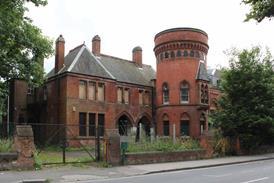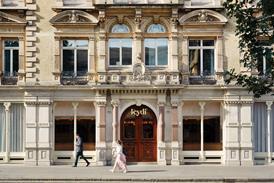How can we expect the public to engage with architects while they associate them with expensive minimalist schemes and unintelligible, self-serving language, says Eleanor Jolliffe

Amanda Baillieu’s recent column spoke of the inability of the profession to effectively engage with the public or communicate beyond its bounds. I wholeheartedly agree but am not sure it is quite as straightforward as that as the general public does love to engage with ‘architecture’, just not architecture as we know it.
Architecture is one of those subjects that people love as a fantasy - the shiny coffee table book, the drama of Grand Designs and Dan Cruickshank’s polite adventures through cities. It all makes for wonderful armchair viewing and may inspire a trip to B&Q. However, in the real world of home improvements a local contractor is all you need, because architects are only for ‘posh people’ - right?
However, in the real world of home improvements a local contractor is all you need, because architects are only for ‘posh people’
A quick Google search, ‘Do I need an architect’ throws up some interesting discussion boards with an alarming proportion of comments along the lines of ‘I wouldn’t use an architect unless … you have money to burn’, ‘seems very expensive… try members of CIAT or RICS for better value options’, and ‘you don’t need an architect with a fancy office and a room full of hipster designers’.
This is frustrating but it isn’t too difficult to see why. Images of expensive looking minimal ‘architecture’ combined with comments made by newly infamous architects calling for “free-riding” council tenants to be moved out of central London do not help our elitist image in the slightest.
This perception seems unfair to the majority of the profession whom spend a great deal of time and effort attempting to create places, spaces and urban environments that enhance people’s day to day lives.
Comments below an article on the winner of last year’s Stirling Prize, Caruso St John’s Newport Gallery were somewhat incredulous. ‘Well, I go past it every day and it’s no more than OK to look at from the train. I certainly wouldn’t have put it down as an award winner’; ‘It beggars belief that the richness of architecture is reduced to bare square walls with the only geometry of space found in a spiral staircase’; ‘A warehouse, is a warehouse, is a warehouse.’ Personal taste and internet trolls notwithstanding there is either a complete disconnect between how architects use buildings and how the general public uses them or more likely, a communication chasm.
Whilst this image is not entirely the fault of the profession as media only highlights the story they want to tell, I can’t help wondering if the national portrayal of architecture might be slightly more nuanced if we weren’t quite so keen to impress our peers. By making our language, our concepts and our awards ever more impenetrable who exactly are we serving?
Is a development described by Bjarke Ingels of BIG as where the ‘urban pavement and the parks turf flow together in a mutual embrace forming terraced pockets overlooking the park and elevating islands of nature above the city” an asset to the general population of that city?
I am not immune to this disease myself, writing in an essay towards my Part II that knocking on a door ‘is the first physical response and intuitive act in response to the home’
Or housing described by architects COBE and Vilhelm Lauritzen Arkitekter as ‘based on a hyper-democratic and contextual approach where folded roofs and architectural heaviness create a dialogue between old and new’ serving the families who live there? I am not immune to this disease myself, writing in an essay towards my Part II that knocking on a door ‘is the first physical response and intuitive act in response to the home’.
Do we actually believe that a profession that engages contextually with the hyperbolic vortex of contemporary culture by expressing itself in tectonically honest place-making directly relevant to anyone? Or has our penchant for an almost entirely obscure turn of phrase and a sleekly uninhabited architectural photo-shoot made us victims of our own rhetoric? Lee Monks of the Plain English Campaign offers a convincing sentiment, ‘Language is bigger than us, and communication - not self-promotion- is what it should be for.’ I am not at all sure that we don’t reduce the relevance of our built works by descriptions as elitist as these.
Like Amanda I believe we need to work out how to better engage with the public, but we also need to learn to communicate how architecture as we understand it makes ‘ordinary’ lives better. We need to be able to appear sincere when insisting that investing in design isn’t a luxury but a necessity. The days of an architect sitting behind a brass plaque waiting for business are long since gone - we need to engage with people if we want them to engage with us.
















26 Readers' comments